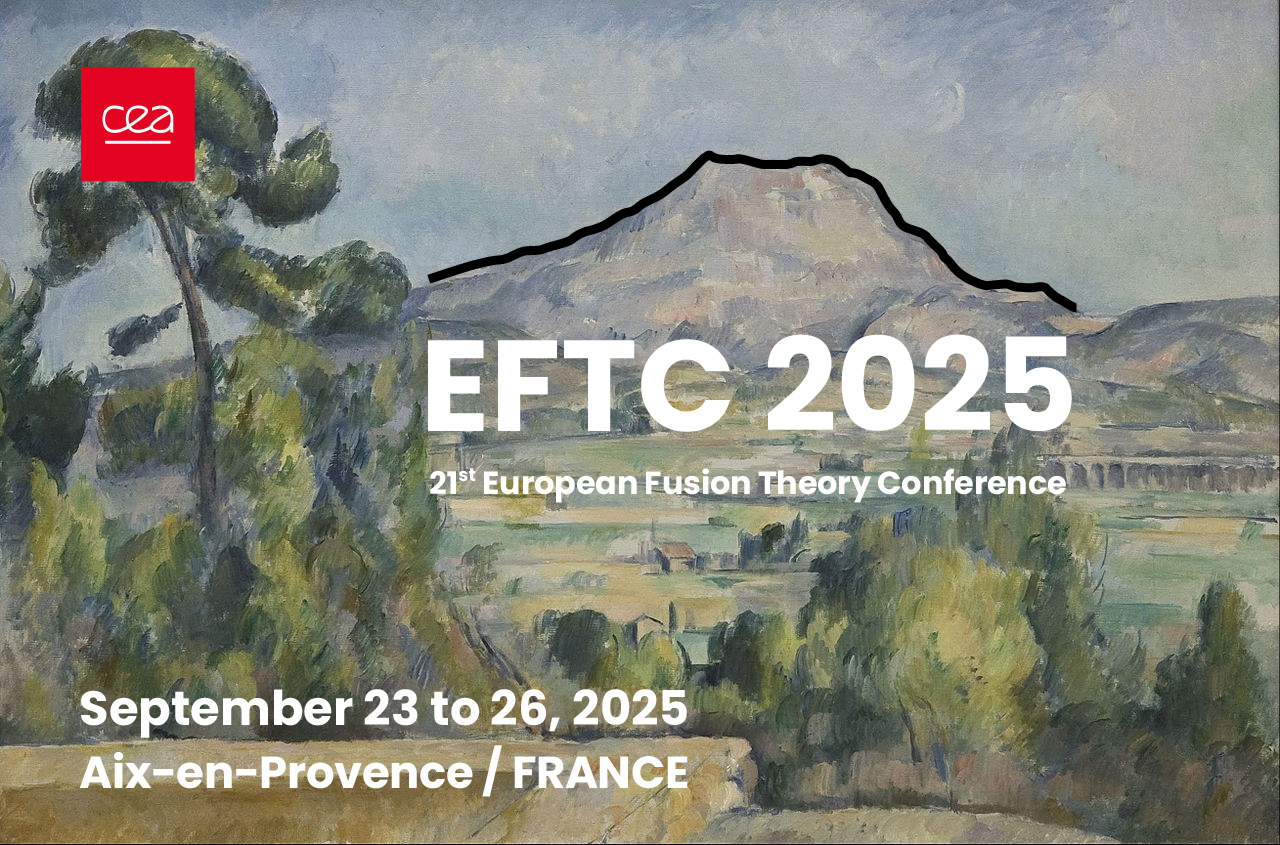Speaker
Description
In the last decades, the modelling of RF-driven toroidal current advanced importantly at the Lower Hybrid (LH) frequency in tokamaks, especially in non-inductive regimes [1]. Of particular importance is the understanding of spectral broadening in the scrape-off layer (SOL), enabling single-pass wave absorption [2], notably in in high-density, low-temperature plasmas with small aspect ratios. Introduced heuristically [3], this mechanism is now mainly justified through density filamentation at the plasma edge [4].
However, LH-driven current modelling coherent with the electric field remains a complex challenge due to their interdependent nature [5], as the electric field strongly influence the MHD equilibrium affecting the wave propagation and the current drive. To address this, a fully self-consistent simulation approach has been developed. It couples multiple computational tools: the C3PO/LUKE solver [6] for ray-tracing and 3D Fokker-Planck calculations, METIS for integrated plasma modelling [7], and FEEQS for solving the MHD equilibrium [8], integrated within the SLUKE framework, facilitating scripting and distributed computing. A key advantage of this approach is its ability to overcome inconsistencies arising from simplified LH models used in early-stage MHD equilibrium estimates, as the initial simulations often produce a current density profile that diverges significantly from the one required by the equilibrium model. The self-consistent loop corrects this by iteratively updating the LH current and electric field profiles until convergence is achieved, typically within ten iterations.
The method has been validated using well-diagnosed Tore Supra plasmas The example here highlighted, discharge #45525 (Fig.1), is characterized in flat top regime at time interval 27-28s, with a fairly hot hydrogen plasma (Te0 = 5.6 keV) reaching peak density ne0=1.9x10+19m-3. Simulations demonstrate convergence of the current density and electric field profiles after several iterations.
This modeling framework will be applied to other tokamaks like WEST to assess its applicability across different magnetic configurations and eventually with adapted to other RF waves, such as Electron Bernstein Waves [9]. Overall, this approach represents a significant step forward in the predictive modeling of RF-driven current in fusion plasmas.
[1] Y. Peysson et al., EPJ Web of Conferences, 157, 02007 (2017)
[2] Y. Peysson et al., Journal of Fusion Energy, 39, 270 (2020)
[3] J. Decker et al., Phys. Plasmas, 21, 092504 (2014)
[4] B. Biswas et al., Nucl. Fusion, 63, 016029 (2023)
[5] N. Fisch, Rev. Mod. Phys., 59, 1, 175 (1987)
[6] Y. Peysson and J. Decker, Fusion Science and Technology, 65, 22 (2014)
[7] J.F. Artaud et al., Nucl. Fusion, 58, 105001 (2018)
[8] H. Heumann et al., Journal of Plasma Physics, 81, 905810301 (2015)
[9] T. Wilson et al., EPJ Web of Conferences, 277, 01011 (2023)

